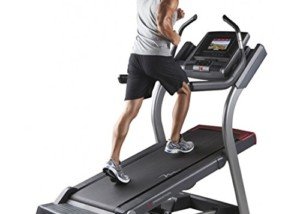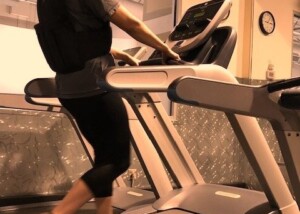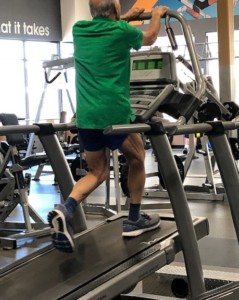
Here’s the answer to the question of which is more effective: holding onto a treadmill at high incline or letting go at lower incline?
Many people wonder which is more effective for weight loss and fitness: using a high incline while holding onto the treadmill, or using a low grade but then not holding on at all.
The answer is basic: Holding onto a treadmill during an incline is never better than letting go.
Now, if you want to get argumentative about this, you can always compare holding onto the highest incline at 4 mph to not holding onto a 2 percent grade at 1 mph.
In this unfair comparison, the holding-on version will burn more calories.
But let’s be fair and real about what to compare.
A fair comparison would be a 15 percent incline at 3.5 mph while holding on, matched up to a 7 percent slope at 3.5 mph with an arm swing.
The lower angle with hands off wins hands down for calorie burn, weight loss and cardiovascular training.
You don’t need science to know this.
Try it yourself:
For 10 minutes, “walk” at the highest incline at 3.5 mph while holding anywhere on the treadmill. How do you feel?
On another day (so that you don’t use the first part of this test as an excuse for how fatigued you get during the second part), walk the 7 percent incline at 3.5 mph, without any holding on; swing the arms naturally.
Sustain this, no holding on, for 10 minutes. How do you feel?
Your first rating of fatigue level will be far lower than your second.
This is because the second part of this test (lower incline, hands off treadmill) is more demanding on the body, much more demanding indeed.
The calorie readout will be higher with the higher incline.
Do not let this dupe you into thinking that a high incline session while holding onto a treadmill is better than a low incline without holding on.
The only reason the calorie total will be bigger is because the total is determined by the steepness of the incline, not by how hard you’re working on the machine.
To prove this, walk level at 2 mph for five minutes while holding on, then note the calorie total.
Now, hold 5 lb. dumbbells in each hand and again walk level at 2 mph for five minutes.
You’ll burn more calories walking while holding 10 pounds than walking with your hands on the machine, yet the treadmill’s calorie total will be precisely the same!
Letting go at a lower incline means that more muscles will be forced to work: low back, abs, hamstrings, glutes, calves, quads and more.
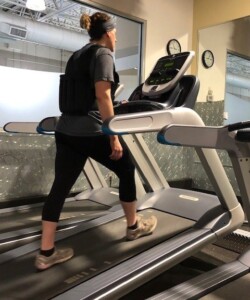
When you hold on, even at high incline, many of these muscle fibers are deactivated.
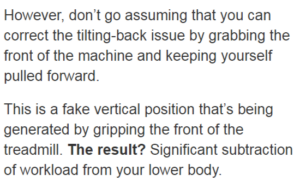
This is a fake vertical position that’s being generated by gripping the front of the treadmill.
The result? Significant subtraction of workload from your lower body.
In fact, even a 4 percent incline at 3.5 mph without holding on beats out the high grade while grasping the machine.
Holding on encourages bad posture and poor biomechanics and can result in repetitive stress injuries to the hips and shoulders.
“A high incline puts more of a concentration on the muscles in the leg,” says Dr. Charles J. Pelitera, assistant professor of kinesiology and coordinator of the Health/Wellness Program at Canisius College of NY.
“When one is holding on, they reduce the tension and thus the opportunity to add an overload and thereby more development.
“The effect of no hands in a low incline and holding on in a high incline will not be the same because of the simple concept of gravity and the role it would play in resistance.”
You now know the many reasons why a lower incline without holding onto the treadmill is far superior to a high grade while keeping your hands on the machine.

 Dr. Pelitera
Dr. Pelitera